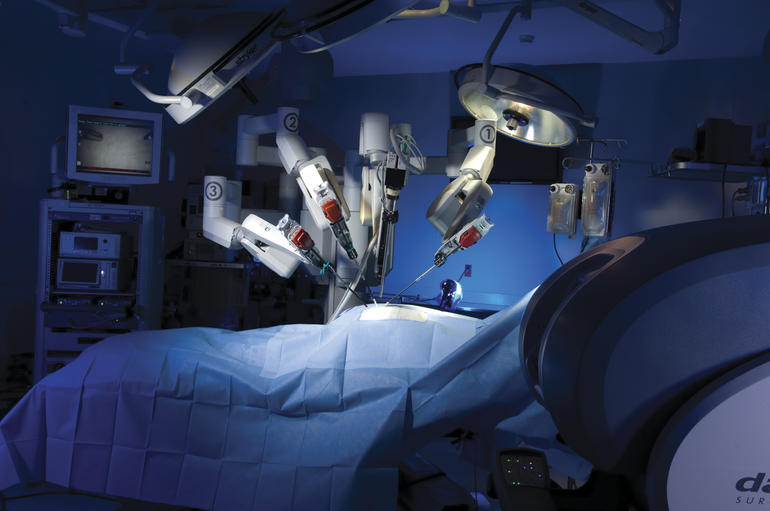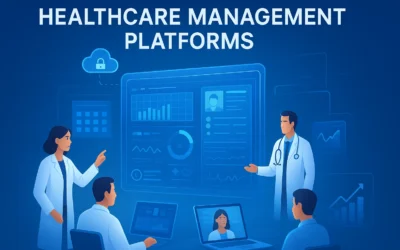Technology has become a powerful force for the human condition. While tech products recreationally entertain people, some really innovative technologies are implemented within the medical field.
MedTech is a booming field in the United States, with companies launching various technological solutions for the medical industry every day.
According to Digital Authority Partners, the Health AI market is on the rise due to the annual growth of about 40% that will help reach a market size of $6.6 billion by 2021. Healthcare AI applications can potentially generate more than $150 billion in yearly savings for the United States healthcare economy by 2026.
While there are more and more technologies being tested for the healthcare environment, there has been a major rise in medical tech products.
Here are 5 technologies impacting the hospital system.
- Mobile MRI
Medical imaging is a significant tool for finding a diagnosis and creating a treatment plan around it. Some of the tests include magnetic resonance imaging (MRI), computed tomography (CT scan), ultrasounds, X-rays, and positron emission tomography (PET scans).
A Mobile MRI is an MRI machine on-the-go, and it has become a great addition to a
hospital system. It consists of a van and trailer that is designed to hold the MRI machining and scans in place. A Mobile MRI also contains extracorporeal shock wave lithotripsy units (ESWL) and gamma cameras that allow medical imaging to go mobile.
This innovation is helpful in acting as a base for visual communication with dedicated imaging software and removes the technical barriers that usually come along with portable scanners.
Accessing medical images from any location is an amazing step forward in
doctor-patient communication and doctor-to-doctor communication.
Fortunately, the cost of Mobile MRI’s is recovered faster than that of fixed MRI’s, so hospitals are now considering it a win-win solution when installing a mobile MRI in their institution.
- Robotic Surgeries
Although used for less complex procedures, robotic surgery is utilized to aid in precision, control, and flexibility.
The most common form of robotic surgery system consists of a camera arm and mechanical arms with surgical instruments attached to them.
During surgery, the surgeon controls the arms while seated at a computer console located near the operating table. The console provides the surgeon a high-definition, 3D, and magnified view, helping the surgeon lead his team for the procedure at hand.
In comparison with other techniques, the surgeon is able to view the details better with robotic surgery. In addition, robotic surgery makes minimally invasive surgeries possible, which lessens complications (such as infection), less pain and blood loss, quicker recovery,and fewer notable scars.
Like any other medical procedure, robotic surgery has a risk; however, the risks are similar to the conventional surgeries that thousands upon thousands of patients undergo. Robotic use is increasing every year with surgeries across the country.
The benefits outweigh the risks when it comes to robotic surgery, which makes this new technological invention a great addition to a hospital setting.
- 3D Printing
This technological innovation is making its mark not only in construction and architecture, but also in medicine.
3D printers are perhaps the most progressive and utilized piece of technology within the medical sphere. During the 3D printing process, these printers can create new joints and implants during surgery, as well as print out organs for transplants and other severe procedures.
3D-printed prosthetics are becoming more popular nowadays due to their digital functionalities, as well as high levels of comfort and mobility.
Not only do 3D printers help with the more serious medical issues, but also with the short-term problems, such as printing pills that can contain multiple prescriptions in one single tablet. With that in mind, this printed pill can help with organization, timing, and monitoring of many medications.
3D printing can go even further by bioprinting artificial organs. For example, this invention can create skin grafts for burn victims, blood vessels, synthetic ovaries, and even pancreas.
Unlike a real organ, an artificial and printed organ cannot reject the body’s immune sysem,which is a revolutionary finding that could potentially save millions of people that depend on life-changing transplants.
- MelaFind
TheMelaFind is an FDA approved handheld tool for multispectral analysis of tissue
Morphology; in other words, this device helps the doctor determine whether or not a biopsy should be ordered.
The name is reminiscent of the word melanoma, which is one of the deadliest forms of skin cancer that can occur from obscure and dangerous-looking moles. Physicians, more often than not, perform a biopsy on the suspicious mole, even if it turns out to be harmless in the end.
Biopsies are an invasive surgical operation, but MelaFind can be an extremely helpful tool for just that. While the tech device does not definitely diagnose cancer, MelaFind confirms the necessity of a biopsy instead.
The goal of the invention is to reduce the number of patients going through an unnecessary, and quite expensive procedure.
Interestingly, MelaFind technology utilizes missile navigation that was originally used for the Department of Defense to scan the surface of a suspicious lesion at 10 electromagnetic wavelengths.
Using specific algorithms, MelaFind collects signals that are processed and matched against a registry of 10,000 digital images of melanoma and other skin diseases.
Taking all of the points above under consideration, MelaFind is definitely a great find for the hospital system.
- Sapien
TheSapien transcatheter aortic valve is an alternative to open-heart surgery for patients in need of a new valve. Patients that cannot handle vigorous operations are the prime candidates for this technological device, as the standard open-heart surgery is very dangerous.
The Sapien valve is guided through the femoral artery through a catheter and inserted in an incision either made in the groin region or rib cage. Valve material itself is made from bovine tissue attached to a stainless-steel stent, which is then expanded by inflating a small balloon.
While prominent in European medical facilities, the United States is adopting the Sapien into the hospitals ever so recently, where the tool is available for the frailest patients.
With this technology, the procedure can become simpler, and the end result would be dramatically shorter hospitalization and overall lower cost for post-surgical care.
Overall, hospitals are beginning to encompass not only the daily medical advances discovered but also the technological age that continues to grow even more. All of these five technologies are playing a crucial role in medical procedures today.

































